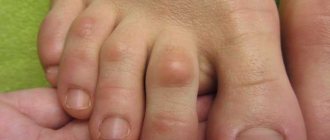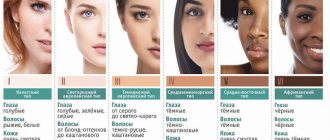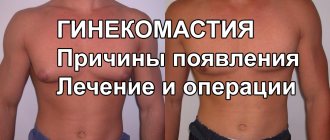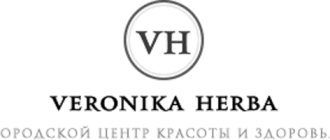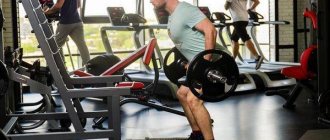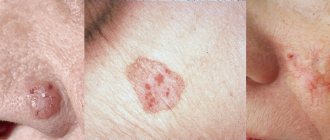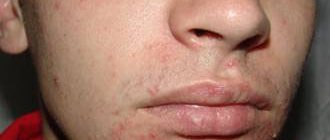Ingrown toenails are a condition that affects many people who do not take good care of their nails. In most cases, the reason that the nail has grown into the finger is considered to be due to improper pedicure. The human mistake is to cut the corners of the nail deeply and form round edges. Often, the toenail grows due to wearing tight and uncomfortable shoes, poor hygiene, or fungal diseases.
In medicine, the disease is called onychocryptosis. An ingrown toenail is much more common than the same problem on the hand or other toes.
At the medical level, experienced doctors conduct a full diagnosis of the disease and also remove the ingrown toenail.
Causes of ingrown toenails.
— Incorrect trimming of the nail plate: cut the nail too short, cut off a corner too deeply, left a burr or a sharp edge, injured the skin around the nail with the edge of the scissors, etc. -Large load on the legs - excess weight, pregnancy, postpartum period. - Injuries to fingers and nails - active sports (running, football), work that involves constant pressure on fingers and toes (drivers, security guards, parking attendants). -Anatomical features of the structure of the fingers and foot - flat feet, valgus deformity of the first toe (bunion), wide foot, physiologically large periungual ridges. - Incorrectly selected shoe size (small shoes or shoes “for growth”), uncomfortable and squeezing shoes with narrow toes, high heels (more than 5 cm). - Incorrect selection of hosiery (socks and tights are pulled too tight). -Diseases associated with improper nutrition of the nail plate - diabetes, heart and vascular diseases, obesity, endocrine pathologies. -Diseases that cause nail deformation - lichen, warts, psoriasis, etc. -Fungal infections (Onychomycosis) lead to thickening, deformation and delamination of the nail plate, disrupting its nutrition and growth, which can also lead to ingrown nail plates.
Diagnosis of the disease
First of all, a visual examination and history taking are necessary. It is important to identify the presence of concomitant diseases - to exclude or confirm fungal infections and diseases that are associated with disruption of blood vessels (diabetes mellitus, atherosclerosis).
Diagnosis of onychocryptosis includes
:
· collecting anamnesis (full collection of data about the patient and his diseases): identifying the causes of the disease, collecting complaints
· visual examination of the patient (diagnosing the stage of the disease and identifying complications): the condition of the nails, periungual ridges, skin of the fingers and feet; the presence of deformation of the fingers, swelling, purulent inflammation, granulation; comparison of two limbs
· general blood test (if complications are detected): carried out to identify or exclude a general inflammatory process. A blood glucose test is also performed to confirm or rule out diabetes.
· bacteriological examination of discharge from wounds (analysis of purulent discharge): the study is carried out to determine the type of pathogen and the severity of the inflammatory process
· X-ray examination (study of the internal structure of the foot): carried out to study the anatomical changes in the structure of the foot and to identify or exclude the transition of inflammatory processes to the bones
Stages of ingrown nails, symptoms and complications.
Ingrown nails usually go through several stages:
1. At the initial stage, swelling of the soft tissues around the nail occurs, redness of the skin, and pain when pressing on the nail fold are observed. 2. Severe swelling and enlargement of the nail fold, its deformation, the appearance of pus, pain when walking and difficulty wearing shoes. 3. Pathological growth of soft tissue, granulation in the area where the periungual fold adjoins the edge of the nail plate, “wild meat”, strong discharge of pus. The beginning of a chronic inflammatory process. Due to severe pain, it is impossible to walk correctly and lameness appears. Associated infection can lead to inflammation of blood vessels and lymph nodes (Lymphadenitis), the spread of pus to the bones (Osteomyelitis) or the process of tissue necrosis (Gangrene), which will require partial or complete amputation of the finger.
Classification of onychocryptosis
Onychocryptosis can go through three stages of development:
- mild, when changes in the plate are not yet visible, but there is pain, discomfort, swelling and inflammation of the periungual ridges;
- moderate, when the tissues of the terminal phalanx are hyperemic, edematous, and infiltrated. The nail plate becomes dull and thickened;
- heavy when the plate becomes thin and brittle. The periungual ridges are swollen and covered with hypergranulations. When the nail folds are affected on both sides, the volume of the phalanx increases.
Onychocryptosis can occur both without inflammation and with the addition of infection.
What to do if you have an ingrown toenail?
You need to consult a podologist.
Unfortunately, we are used to self-medicating. We endure the pain, hoping that everything will go away on its own. We ask friends for advice, read articles on the Internet about “proven folk remedies,” diagnose ourselves and prescribe treatment. With Onychocryptosis, this approach can lead to a worsening of the situation. If you already have symptoms of the first, and even more so the second stage, immediately see a podiatrist! In our Podology Center you will receive a consultation and find out how to more effectively solve your problem.
Concept of orthodoxy
Orthonyxia is a branch of podology that deals with the correction of the shape of the nail.
The founder of orthonyxia was the Scottish dentist Ross Fraser, who invented a special bracket in the 60s of the last century. The invention was named the Fraser bracket in his honor.
A carefully selected treatment technique allows you to straighten and, in many cases, restore the nail plate. Considering that another way to solve the problem is surgery, the benefits of orthonyxia are obvious. Orthonyxia is the only treatment method that eliminates the very cause of the disease, and, therefore, minimizes the risk of relapse.
Treatment methods for ingrown toenails.
There are two main treatments for Onychocryptosis:
- Surgical method - removal operation.
— Conservative (non-surgical) method - orthonyxia.
Surgical removal is used if the patient has brought his condition to the third stage of severity. During the operation, the ingrown edge of the nail is excised under local anesthesia, with a scalpel or laser. In severe cases, complete removal of the nail plate is possible. The growth zone is affected and the periungual ridge is resected.
In addition to a long recovery period, this method has a low cosmetic effect and a high probability of relapse (re-ingrowth of the nail plate).
Non-surgical methods for treating ingrown toenails are aimed at combating the purulent-inflammatory process, reducing pain and correcting the growth of the nail plate.
There are more than 50 types of correction systems used by podiatrists in practice - Combiped, Podofix, 3TO, Arcade, Fraser bracket, Titanium Thread, B/S plates, etc. These plates and staples are attached to the nail plate and lift the nail. They pull it up, which prevents it from crashing into the side bolsters.
This leads to pain relief and correction of the growing nail, correcting its bend. Over time, nail growth changes and the ingrown problem is eliminated. Modern plates and staples are installed painlessly, are not felt when walking and do not cling to clothing and shoes.
Complications
Complications of onychocryptosis occur with prolonged course and further development of the inflammatory process. Such complications include:
- abscess of the toe - swelling, redness of the entire nail phalanx and the formation of a cavity with purulent contents;
- gangrene of the toe - irreversible necrosis of the soft tissues of the foot, accompanied by blackening of the skin;
- osteomyelitis of the nail phalanx of the finger - an infectious inflammatory process that affects the entire bone of the phalanx;
- lymphangitis and/or lymphadenitis is inflammation of the lymphatic vessels and lymph nodes, developing as a result of the spread of the inflammatory process from the source of infection.
How to prevent ingrown toenails?
It is necessary to adhere to simple rules that follow from the causes of ingrown toenails: - Trim your nails correctly (see the article How to trim nails correctly). On the toes, cut the nail in a straight line, passing no lower than the top of the finger. We do not cut off the corners, but calmly file them with a soft file so as not to injure the skin. -Control excess weight that puts excess stress on your legs. -Wear comfortable shoes that fit. Orthopedic shoes for flat feet. Silicone inserts for hallux valgus. Avoid high heels, and if you have to wear them, do so for no more than 4 hours at a time. -Change your socks and wash your feet regularly. Treat your shoes with disinfectant. means. -Correct concomitant diseases that lead to nail deformation. -Get hygienic pedicures and manicures from professionals regularly.
Thus, if you discover the beginning of an ingrown nail, you should immediately contact a specialist podiatrist. In conditions of high sterility, the podologist will conduct an examination and give recommendations for care. He will tell you about possible options for correcting the nail plate and getting rid of problems associated with nails and feet.
The beauty and health of your feet is in our hands.
SIGN UP
Methods for straightening the nail plate
If the disease has just begun to develop, tamponade is also used as a preventive measure - hygienic treatment and nail trimming. But in more advanced cases, when the conservative method no longer gives results, radical methods are needed - installing plates or staples. They act like springs: by stretching, they release the edges of the nail plate from the adjacent skin, eliminating pain and inflammation. They are worn for several months, but sometimes a longer period is needed (up to a year). This time is enough for the correct nail arch to form, after which the problem will no longer arise:
- correction plates are used if the nail is not too noticeably deformed and does not have a dome shape;
- staples are used for severe damage or deformation of the nail plate.
After installing the brace, mild pain may occur, which will quickly subside.
Reviews:
Barkalov Sergey
I suffered with the problem of an ingrown toenail for almost a month. When the pain became completely unbearable, I began to look for where I could be cured. As a result, I turned to Alexander Shadzhievich. He carried out all the procedures and follow-up superbly. I'll be honest, I was very nervous and worried about the operation. But the whole process, surprisingly, was almost painless, just like the first days of dressings. Even taking into account my business trips, everything healed quite quickly, the main thing is to follow all the doctor’s recommendations. I am very grateful to Alexander Shadzhievich for the accuracy and attention shown during the treatment.
Margot
Esenbekov Bek
I contacted doctor Alexander Shadzhievich regarding the removal of an ingrown nail on two fingers after a relapse. I am pleased with the result and express my deep gratitude to Alexander for his professionalism and friendliness. I recommend it if you want to get rid of the problem forever.
Azanov Igor Gennadievich
Since the age of 14 (since 1973), I have had the problem of an ingrown toenail on the big toe of my right foot. Initially, I did not contact doctors. I cut it out myself, which was sometimes extremely painful and was accompanied by suppuration (I applied Vishnevsky ointment). Then the nail grew back and the problem returned. For the first time, the rightmost part of a large nail was removed in a hospital in the 80s. There was no positive result, as with all subsequent surgical removals (several times). In 2006, a private clinic performed laser removal, which also turned out to be unsuccessful. In 2022, I went to a podiatry clinic for advice on preventing ingrown toenails (they don’t do removal there). If it is necessary to remove an ingrown nail, it is recommended to contact Dr. Garmaev A.Sh. 10/12/2019 doctor Garmaev A.Sh. performed a marginal resection of the nail using radio waves, gave qualified recommendations on wound treatment and further nail care. As a result of the operation, for the first time I got rid of subsequent ingrown nails and all the accompanying problems. I express my deep gratitude to doctor Alexander Shadzhievich Garmaev for his high professionalism, attentive and sensitive attitude to the patient’s problem. Sincerely, Azanov I.G. 04/29/2020
Margarita
Nikita
Hello, I wanted to share my experience. Since I was 12 years old, I have been tormented by the problem of ingrown toenails. Most doctors said that this is a predisposition and nothing can be done about it. They removed it several times, but after the nail grew back (3-4 months) it all started again. Over the past year, I had my nail removed 3 times, each time the operation was very painful and each time there was a relapse. I must say, I am impressed with the result of Alexander Shadzhievich’s work. Thanks to this doctor, in just 2 weeks my finger acquired a healthy and, importantly, aesthetic appearance. A complex procedure (removal of part of the periungual ridge, removal of part of the mold to correct the direction of nail growth, microwave treatment) prevented the problem from reoccurring. The incision site was sutured, thanks to which the wound healed quickly. A day later I already went to work. Anesthesia injections were made into the base of the finger almost imperceptibly, and then the entire operation was completely painless. I express my deep gratitude to my savior, a wonderful doctor and a true professional, a doctor of the highest category, Ph.D. Garmaev Alexander Shadzhievich.
Orhan
Operation
Surgical intervention
is performed on an outpatient basis under general anesthesia according to Oberst-Lukashevich (Novocaine, lidocaine and others).
The drug is administered in 2.0 - 4.0 ml. with a very small needle in the projection of the neurovascular bundles at the base of the finger. We most often use an insulin syringe. To bleed the finger, provide good visualization and prevent bleeding, we use a rubber flagellum. The duration of the operation is usually 5 - 30 minutes.
Life after solving a problem
After treatment, pain when pressing disappears, and in the case of a problem on the big toe, pain when walking, and the supporting function of the entire foot is restored. In order not to think about how to cure an ingrown toenail in the future and not to consult a doctor with other problems (onychogryphosis, leukonychia, candidiasis, etc.), experts advise following simple preventive measures:
- take proper care of your nails: do not cut corners and use scissors with straight edges, always check that after cutting the nail contour is straight;
- do not neglect periodic medical pedicures, especially if there are problems with the feet (blood circulation is impaired, there is a tendency to fungal diseases, flat feet, etc.);
- give preference to loose and comfortable shoes with stable heels. This measure will allow you to avoid not only onychocryptosis, but also calluses and corns. You can wear narrow high-heeled shoes without a break for no longer than 4 hours;
- use special orthopedic insoles if there are any deviations in the position of the foot and their correction is necessary (flat feet, anatomical features);
- Treat shoes with disinfectants every day.
If you are in pain, and you don’t know how to cure or remove an ingrown toenail without cuts or scars, contact a podologist at SM-Cosmetology. Treatment is carried out using modern certified materials and drugs, under 100% sterility conditions. During therapy, doctors use gentle techniques and try to preserve the nail plate even in difficult clinical cases.
—>
Laser therapy
This is the most modern way to remove toenail fungus. It also has maximum efficiency. Unlike the surgical method, the laser selectively approaches the problem. The heat wave penetrates the stratum corneum, drying out only the affected parts and not affecting the healthy ones. Depending on the equipment used, the waves can have different lengths and temperature intensities. This varies the time of therapy. A treatment session for one finger takes 5-7 minutes. To get rid of the infectious agent, several procedures are required. Sessions are carried out with a frequency of 1-2 weeks. The duration of the entire course depends on the size and number of affected areas.
- parallel treatment of oncology;
- epileptic seizures and other mental disorders;
- bearing a child, lactation;
- HIV infection.
For people with a low pain threshold, it is better to notify the doctor so that he can administer local anesthesia. Laser therapy is painless, but a strong burning sensation may be felt during the heating process. This is especially true if the fungus is in the lower layers of the nail plate.
This method is characterized by the absence of relapse of the disease: the fungus is completely destroyed. Unfortunately, laser therapy is rarely found in public clinics, so you need to contact specialized centers for it. The cost of a course of treatment for one finger is more than one and a half thousand rubles.
Cost of treatment. Operation price
| Service | Cost, rub) |
| Initial appointment. Consultation | 1500 |
| Removing an ingrown toenail is simple | 2500 |
| Removal of ingrown toenails using the radio wave method | 3500 |
| Removal of an ingrown nail using the radio wave method with plastic surgery of the periungual fold according to Schmieden | 4500 |
Recommendations during the recovery period
The effectiveness of the treatment largely depends on the patient’s behavior during the rehabilitation period. Our experts give the following recommendations during the recovery period:
- be careful not to allow the correction plates to come off and the staples to be lost;
- temporarily stop wearing nail polish;
- Use orthoses to prevent calluses while wearing braces.
For 5-6 days after laser surgery, it is necessary to change the bandage twice a day, treat the plate and side rollers with an antiseptic, and re-bandage the finger. On the 7th day, the bandage can be removed - this will speed up the process of tissue restoration. The patient should not visit saunas, steam baths, or swimming pools for a week.
